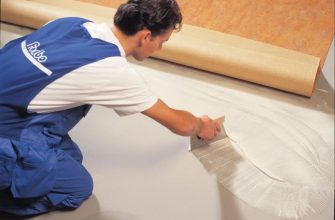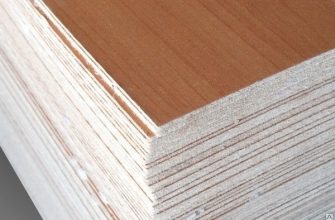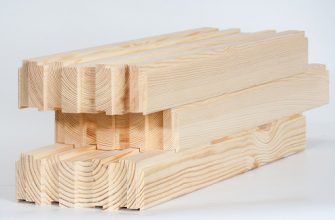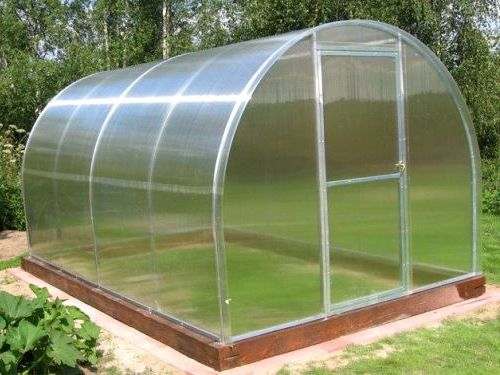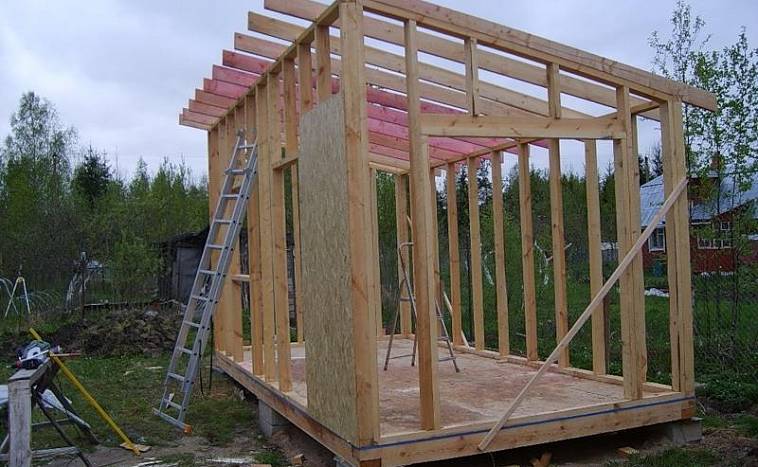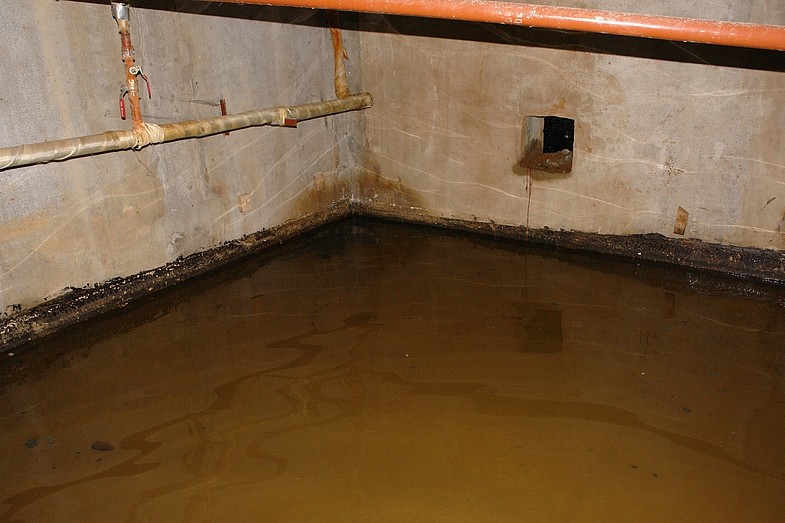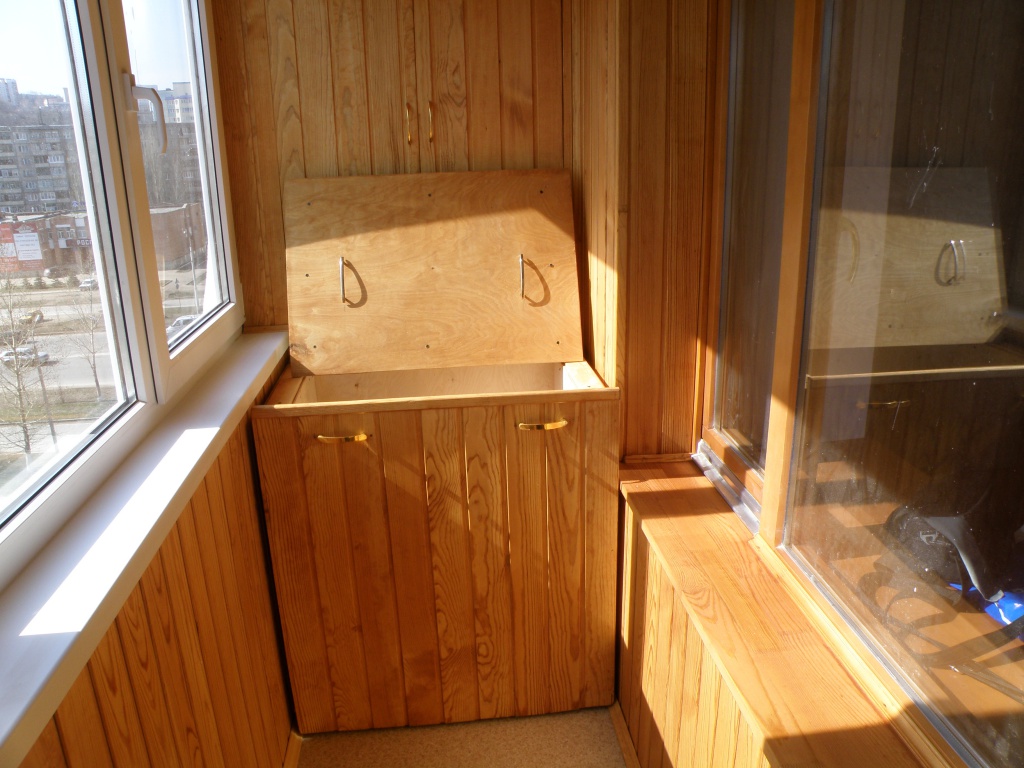As a rule, in private garages, a reinforced concrete screed is used as a subfloor. The design is distinguished by a mass of positive qualities: strength, reliability, durability and water resistance. At the same time, untreated concrete cracks, abrades and becomes very dusty under the influence of external factors. A well-chosen and correctly applied garage floor covering will help save the day. Qualitatively finishing the base is within the power of any car enthusiast. To get started, you should familiarize yourself with the range of garage flooring.
Concrete impregnation protection process
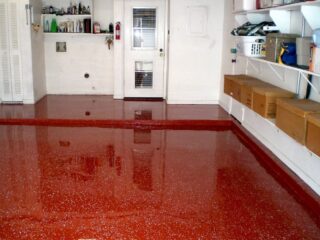
The upper layer of the screed is characterized by the lowest density, there are many pores and microcracks on it. Because of this, over time, it begins to crumble and gather dust. And this worsens the appearance of the coating, makes it difficult to clean, and is harmful to health. A good means of strengthening the loose layer are synthetic and organic impregnations, in a wide range presented in the trade network. These are liquid formulations that, after application, are able to strengthen the base to the state of a natural stone.
The master has the following types of deep penetration tools:
- Polymeric. They are made on acrylic, polyurethane base. When applied, they are absorbed into concrete through microscopic holes on it to a depth of 20 mm. After that, they polymerize and harden, forming a strong layer that protects the slab from the penetration of moisture, fuel and technical fluids. The method belongs to the budget category, since it provides the declared characteristics for up to 10 years, after which you need to think again about how to cover the floor.
- Epoxy. Inorganic compounds are more effective. After being absorbed into the thickness of the slab, they enter into a chemical reaction with its components, forming new crystalline bonds. As a result, the already considerable strength of the screed increases tenfold. The coating is of the highest quality, wear-resistant and durable, capable of serving the entire service life of the building.
On the surface, the solutions are applied manually using paint brushes and rollers. When buying products, you must carefully study their purpose. There are mixtures that are universal or intended only for fresh concrete.
Rubber paint
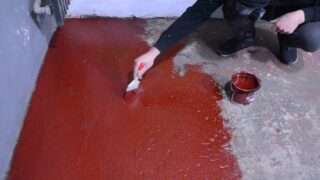
Rubber paint will allow you to solve several problems at once - to protect the screed from water, chemicals, get rid of dust and give the floor a presentable appearance. The rubber has good adhesion and adheres very firmly to the substrate.
In order for the painting to meet the required parameters, the following conditions must be met:
- Compliance with the intended use The packaging must be labeled accordingly. Such solutions have anti-slip and anti-static properties.
- The need for preliminary leveling and priming. This process is long, step-by-step, but without it it is impossible to achieve the desired effect. It should also be borne in mind that both fluids must have the same composition.
- The penetrating solution should be applied twice at intervals of up to 12 hours after complete drying. It is allowed to paint only on a completely dry surface. If the primer has not been absorbed in places, it must be removed with a rag.
- The rubber paint is sold ready-to-use and does not need to be diluted. If you want to get a beautiful color of the floor, you can add pigments of the appropriate composition.
- During work, a strong specific odor is released. In the process of applying the composition, it is advisable to use a respirator, organize effective ventilation, and prevent the use of fire and electrical appliances with open spirals.
The liquid must be applied two or three times, in thin layers, after each pass, waiting for complete drying and changing the direction of movement with the tool.
Laying rubber asphalt
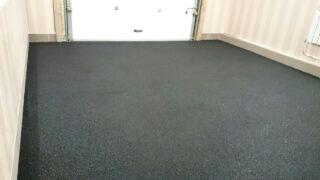
Rubber asphalt is a strong, durable, presentable base. Shoes will not slip on it, the spilled liquid drains quickly, it will not have to be changed for at least 15-20 years.
A mixture of crumb rubber with polyurethane glue or similar polymer binders is prepared immediately before use. First, a dye is added to the crumb, and only then a sticky substance is poured into the container. To give shine, silicate glass, crushed into powder, can be poured. Drying occurs within a few minutes due to the presence of xylene in the filler - an effective petroleum solvent. The finished coating is characterized by a rich color, rough and hard surface, resistance to water, oil and acid solutions.
Application is carried out with a spatula in the manner of plaster, leveled and immediately rolled tightly with a roller. A prerequisite is thorough preparation of the base. It must be leveled, degreased with acetone and primed with polyurethane adhesive. Before laying polymer asphalt, the surface must be cleaned of dust.
This finishing option is good with almost unlimited applicability. It can be easily applied on old and new concrete, ceramic and PVC tiles, painted and primed floors. It is easy to dismantle the coating - just heat it with a construction hairdryer and pry it off with a scraper, trowel or spatula.
An interesting model of rubber asphalt that deserves attention is tile and roll coatings. The first option represents strips of various widths and lengths up to 10 meters. The second - square or rectangular slabs with sides from 40 to 100 cm. Their edges are equipped with locks that provide a tight, almost seamless connection. Laying is carried out on a primed base covered with polyurethane glue, followed by pressing with a roller. You can cover it monotonously, make contrasting halves, cover it in a checkerboard pattern or mosaic.
The thickness of the crumb rubber coating varies between 10-50 mm; for a private trader, experts recommend choosing 15-20 mm with mounting on foam. This is sufficient for effective thermal insulation and a long service life.
Self-leveling floor device
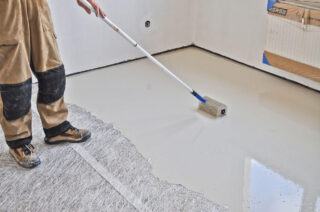
Self-leveling polymer floor covering in the garage is rightfully considered the most spectacular, practical, but also expensive way of finishing. The cladding is a flowable, viscous mixture that spreads on its own along the screed and forms a perfectly smooth surface. Means are made on a concrete, polymer and epoxy basis, in accordance with the composition, the price and thickness of the formed layer differ. Cement mortars are considered the most affordable, and epoxy ones occupy the top position in the price range.
Users note the following advantages of bulk mixes:
- strength;
- abrasion resistance;
- beauty and presentability;
- immunity to organics and chemicals;
- perfectly smooth plane;
- simplicity and high speed of application.
Before pouring the solution, the floors must be properly prepared.
- Fill up all cracks and holes, fill in the recesses and grind off the bulges.Achieve a height difference of no more than 1-1.5 mm.
- Sand and polish the concrete. Cover it with a deep penetration primer.
- Paint the floor with resin paint to create a background for the fill.
- If the mixture is transparent, you can apply a pattern to the floor or glue bulky objects - coins, shells, beads, small pebbles, and the like.
The solution is poured out in portions, starting from the corners opposite to the entrance, distributed with mops, and finally rolled with a needle roller to remove air bubbles. Additional alignment is not required, the composition takes on a smooth shape by itself.
Reinforcement of the concrete floor
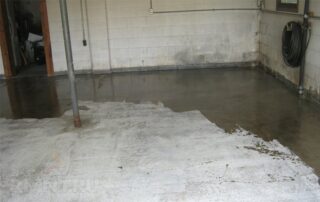
Ironing (topping) is the imparting of increased strength to fresh concrete screed. The procedure is carried out in a short period when the solution has hardened, but its surface remains loose. At this stage, a special mixture is rubbed into it, forming a dense and sealed layer on the surface of the slab.
The mixture includes the following components:
- Portland cement;
- pigments;
- plasticizers;
- metal filings;
- quartz;
- corundum;
- basalt;
- silicon carbide.
The ironing process is carried out in the following sequence:
- When the screed stops loosening, the topping mixture is evenly distributed over its surface. This is done manually or with a special mechanism.
- The poured composition is rubbed into the plate. At the same time, moisture comes out of it, which ensures mixing of the layers.
- The screed is again sprinkled with topping, water is sprayed over it, the next grout is performed until the surface becomes homogeneous.
- After the floor has hardened, it is sanded. Hand tools or industrial devices such as "helicopter" are used. The abrasive grains are gradually reduced from # 40 to # 120 until the concrete is perfectly smooth.
After ironing, the screed is cleaned of dust and crumbs, treated with a primer or impregnation. The concrete is left as is, covered with paint or clear varnish.

